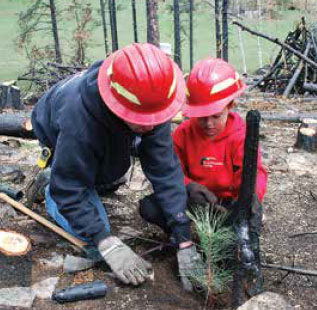
Photo: Ryan Lockwood, CSFS
FORT COLLINS, Colo. — The Colorado State Forest Service (CSFS) and Colorado Water Conservation Board released a report providing scientific information about the benefits and challenges of managing Colorado’s forests to secure water supplies.
The report, Forest Management to Protect Colorado’s Water Resources, was produced in compliance with a 2016 legislative mandate to supplement the Colorado Water Plan.
The report addresses the following factors affecting Colorado’s forests and water supply:
- Wildland fire
- Insect and disease outbreaks
- Changing climate
- Roads and human disturbances
While describing the challenges and potential benefits of forest management treatments for water supply and water quality, the report also summarizes the costs to watersheds, communities, water users and infrastructure if forest management does not occur.
Projections of increased forest disturbances (particularly wildfire and insect/disease outbreaks) have created concerns about the sustained delivery of clean water from headwater forests.
Managing forested watersheds through partnerships
While more scientific research is needed to document the combined impact of wildfires, insects and climate on forest health, partnerships between stakeholders will be vital to manage forested watersheds to meet Colorado’s diverse water needs.
For decades, CSFS has partnered with various entities around the state to manage impacts to forests and water supplies.
The report cites CSFS partnerships in three areas of the state:
- Pikes Peak Watershed
- Colorado-Big Thompson Headwaters
- Upper South Platte Watershed
These partnerships have resulted in tens of thousands of treated forested acres in watershed areas.
Interested parties may view Forest Management to Protect Colorado’s Water Resources for details, including a complete appendix of scientific papers that address forest health, water and related issues.

